Hwajinpo Lake (화진포(화진포호))
316.5M 2021-08-10
Geojin-eup, Goseong-gun, Gangwon-do
+82-33-680-3677
Hwajinpo Lake is the largest lagoon in Korea with its sand made from seashells and rocks that were broken down over thousands of years. With soft sand and shallow waters, it is a popular beach location. In winter, various migratory birds and swans can be seen, as the birds enjoy clean water and food from the field of reeds. Because of its excellent scenery, Kim Il-seong of North Korea and the former South Korean President Rhee Syngman and Vice-president Lee Ki-poong had summer houses here. It also has Hwajinpo Museum of History with more than 40,000 artifacts from 1,500 species.
Villa of Rhee Syngman (이승만별장(고성))
473.5M 2025-01-15
33, Iseungmanbyeoljang-gil, Goseong-gun, Gangwon-do
+82-33-682-0500
During the 1950's, three leaders, namely Kim Ilsung, Rhee Syngman and Lee Ki-poong had summer houses built around the lake of Hwajinpo. The villa of Rhee Syngman, Korea's first president, was built in 1954 but fell into a state of disuse by 1961. It was not repaired until July of 1997 by the army, and was fully restored in 1999, opening as an exhibition hall.
Hwajinpo History & Security Museum (화진포역사안보전시관)
501.0M 2021-07-20
33, Iseungmanbyeoljang-gil, Goseong-gun, Gangwon-do
+82-33-680-3677
Next to Hwajinpo Lake and a dense forest of pine trees lays Hwajinpo History and Security Museum. Its premier location near amazing ecological sites makes the museum a popular destination to pay a visit. The museum holds goods used during warfare and other historical remains of former presidents. Various government officials had private villas in the area including former president Syngman Rhee.
Villa of Lee Ki-poong (이기붕별장)
997.1M 2022-09-08
300-1, Hwajinpo-gil, Goseong-gun, Gangwon-do
+82-33-680-3677
The villa of Lee Ki-poong is located between the villas of Rhee Syngman and Kim Ilsung on the shores of Hwajinpo Lake. The villa was originally built by foreign missionaries in the 1920s. It was used as vacation villa by the Northern communist party's executives before the Korean War broke out, and was turned into a private residence by Lee, the Vice-president to President Rhee, and his wife Maria Park after the cease-fire agreement.
Castle at Hwajinpo (화진포의 성(김일성별장))
1.0Km 2025-01-10
280 Hwajinpo-gil, Goseong-gun, Gangwon-do
+82-33-680-3677
The Castle of Hwajinpo was the summer retreat for Kim Ilsung, former leader of North Korea, and his family from 1948 to 1950. Photos of the family on vacation there show Kim Jungil as a young boy of six years. The building was constructed entirely of stone in 1938 by a German architect for the Sherwood Hall missionary family, and features a basement level and two above-ground floors. The house is now open to the public, with an exhibition of how the house was used by the Kim family, faithfully recreated from photographic research.
Hwajinpo Beach [National Geopark] (화진포 (강원평화지역 국가지질공원))
1.4Km 2021-06-23
Hyeonnae-myeon, Goseong-gun, Gangwon-do
+82-33-249-3881
Hwajinpo Lake is the largest lagoon in Korea, created by a section of the ocean being closed off when two opposing sand spits merged. This unique formation and the ecosystem that came to live on the sand bar are highly valued. The water in the lagoon was a mix of fresh and salt water, creating a special environment for aquatic animals of both types to live together. The lake is in the shape of a figure eight, with the southern lake being larger than the northern lake, although the northern lake is still connected with the ocean through a small stream.
Hwajinpo Beach (화진포해수욕장)
1.7Km 2024-12-10
Opened in 1973, Hwajinpo Beach is a stretch of white sand made of monazite, a fine sand made of crushed shells and rocks over tens of thousands of years. Monazite sand makes a distinct sound when stepped on and repels ants. The beach is 1.7 kilometer long, about 70 meters wide, and 1.5 meters in average depth. The beach attracts many tourists with its fine white sand, clear waters, and shallow depths. Its view is characterized by scenic landscape of handsome rock formations and lush pine forests surrounding the massive Hwajinpo Lake. The area is home to the Villa of Kim Il-sung, the Villa of Syngman Rhee, the Villa of Lee Ki-poong, and Hwajinpo Maritime Museum. The scenic view of the bamboo forest on Geumgudo Island and the seagulls flying over the water will leave visitors in awe.
Hwajinpo Lake (화진포)
2.2Km 2024-12-10
Hwajinpo Lake is one of the most famous lagoons in Korea. It is connected to the East Sea and blessed with natural light, with dense pine forests spreading like folding screens around the vast lake, which covers an area of 238ha. The beach is shallow, clear, and has a great view of the Geumgudo Island, making it popular among tourists. In winter, the area also serves as a refuge for migratory birds, including Natural Monuments like swans. Indeed, the view of the swans dancing over the lake brings to mind Tchaikovsky’s masterpiece. The reason why migratory birds head to Hwajinpo Lake is because of its clean water and the abundant food within its reed beds. The surrounding areas are home to the Castle of Hwajinpo (Villa of Kim Il-sung), Villa of Syngman Rhee, and Hwajinpo Maritime Museum, home to nearly 40,000 exhibits of 1,500 rare shellfish, coral, fish species and fossils, along with historic sites like dolmens. The area is a vital habitat to many aquatic creatures like carp, grey mullet, leather carp, and snakehead.
Jebiho Restaurant (제비호 식당)
3.0Km 2024-03-18
29 Geojinhang-gil, Geojin-eup, Goseong-gun, Gangwon-do
033-682-1970
Jebiho Restaurant at Geojin Port in Goseong specializes in saengtae jjigae (pollack Jjigae). Saengtae jjigae, a dish prepared by cutting freshly-caught pollack into pieces and boiling them in soup, is known for its clean and light flavor. The menu also features dongtae tang (pollack soup), galchi jorim (braised cutlassfish), and modeum saengseon jorim (assorted braised fish). Geojin Port is situated near attractions like Geojin 1-ri Beach, Geojin Lighthouse Sunrise Park, as well as Geojin Haemajibong Forest Park. The Goseong Unification Observatory is just a 10-minute drive away.
Geojin Port (거진항)
3.3Km 2025-01-10
62-3 Geojinhang 1-gil, Geojin-eup, Goseong-gun, Gangwon-do
Geojin port is renowned for its pollack and squid fishing and is one of the top producers of pollack in Korea. Visitors can indulge in a variety of dishes featuring this fish. Popular options include myeongtae seogeori (julienne radish fresh salad with fresh pollack gills) and myeongnan sikae (salted and fermented pollack roe tossed with millet). Nearby attractions include Geojin Lighthouse Sunrise Park, Geojin Haemajibong Forest Park, and Geojin 1-ri Beach.
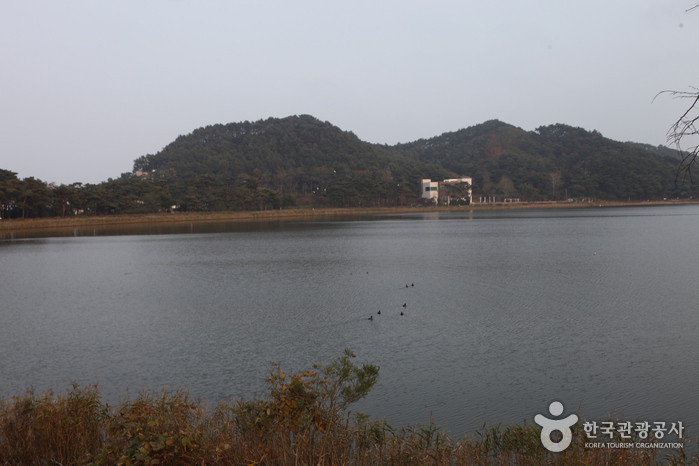
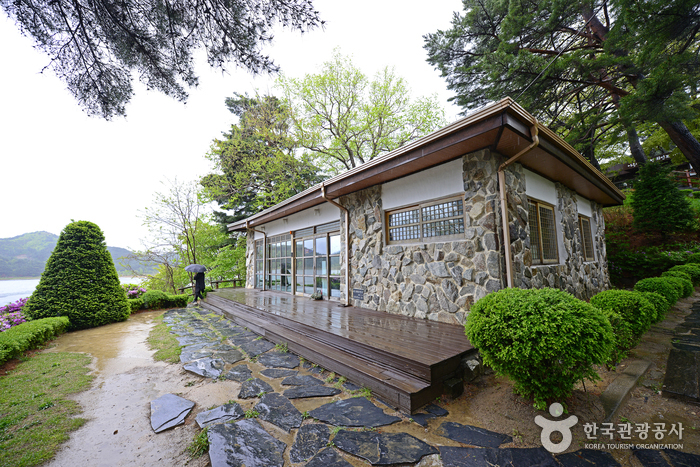

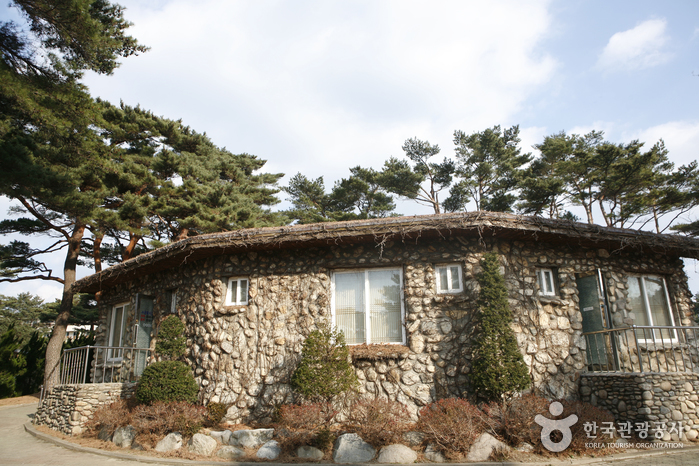
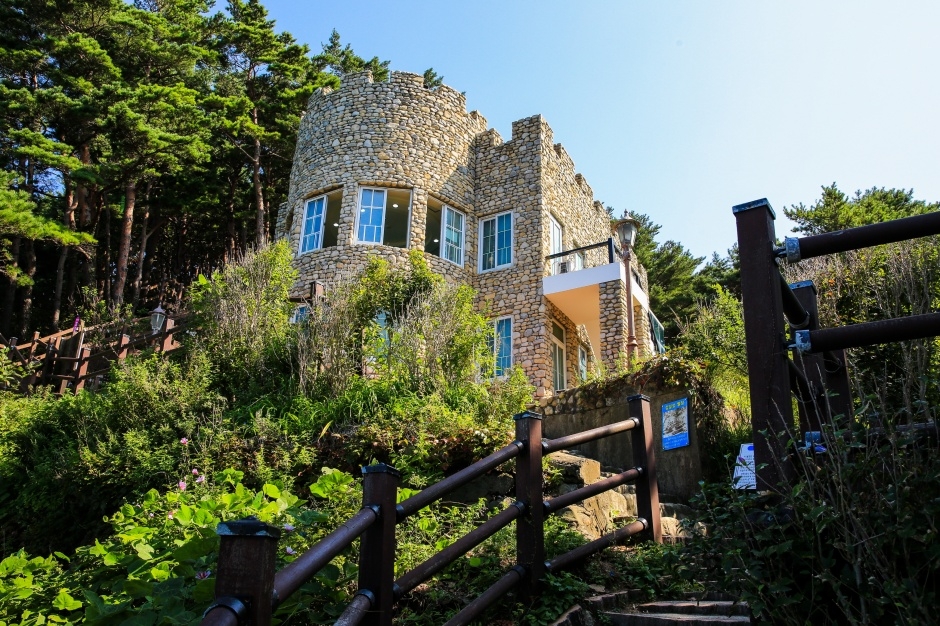
![Hwajinpo Beach [National Geopark] (화진포 (강원평화지역 국가지질공원))](http://tong.visitkorea.or.kr/cms/resource/87/217287_image2_1.jpg)
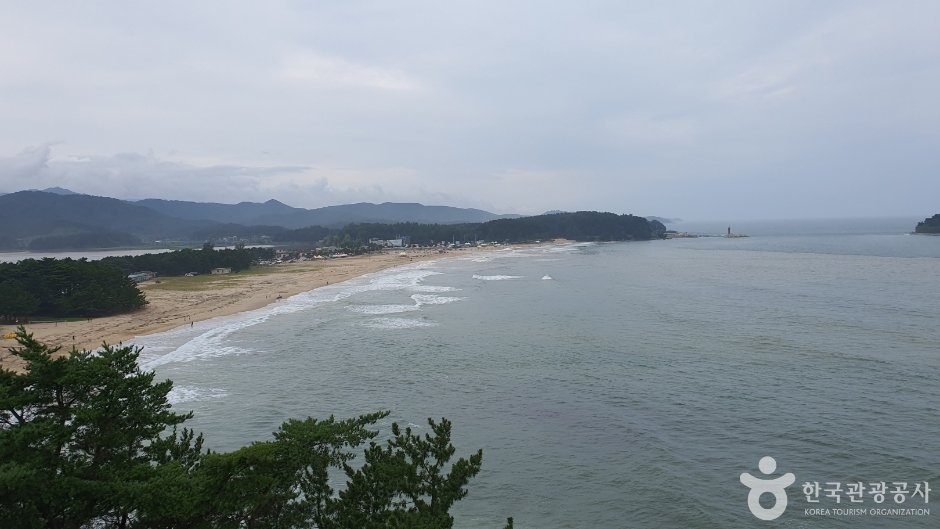
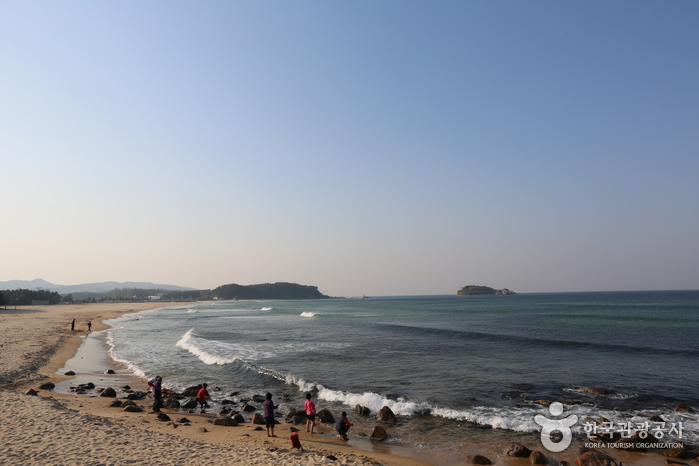
 English
English
 한국어
한국어 日本語
日本語 中文(简体)
中文(简体) Deutsch
Deutsch Français
Français Español
Español Русский
Русский